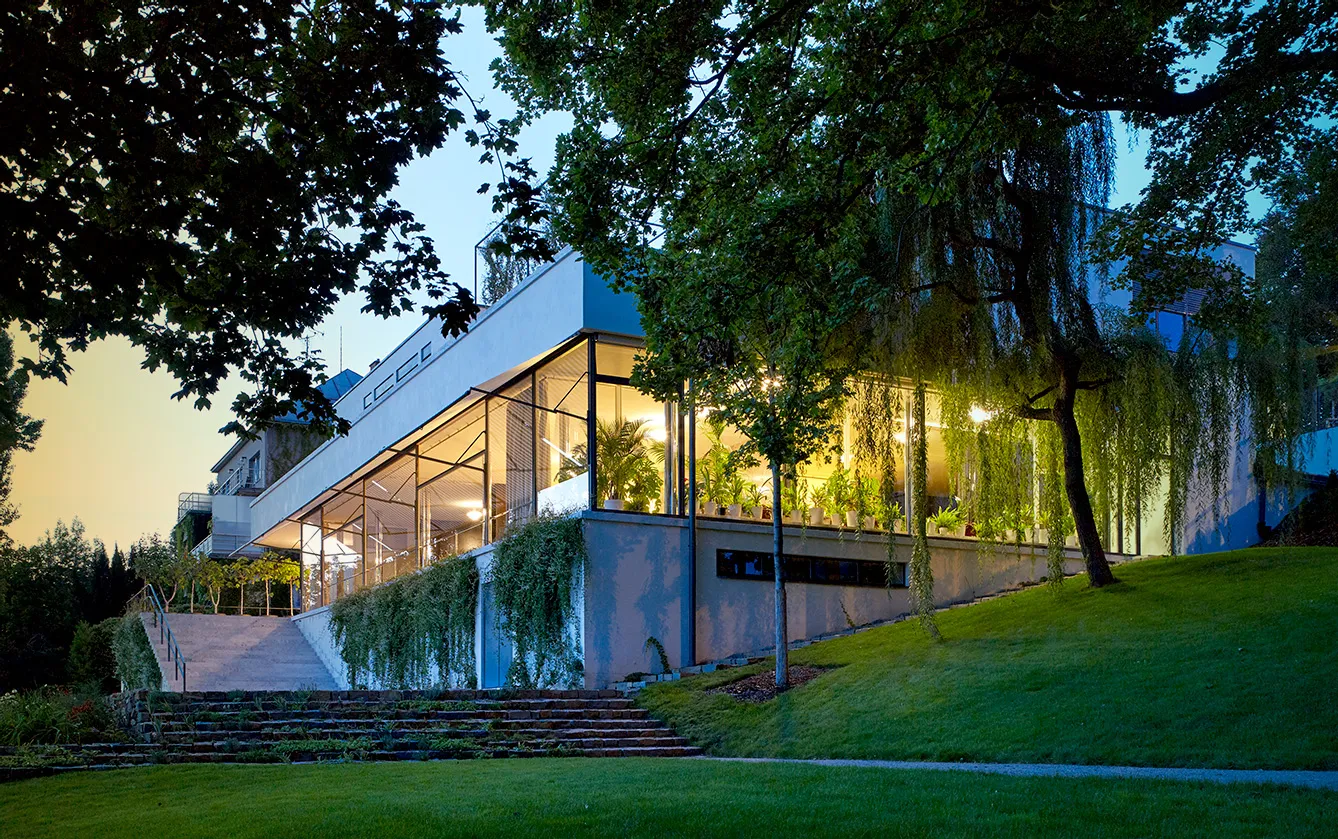Walking down Černopolní street in Brno is like walking any other road in the second-largest city of the Czech Republic: nice houses, well-kept gardens, a lot of greenery, and almost surprising quietness for a town of 400 hundred thousand people.
But then you get to number 46. At first glance, it is an ordinary one-story house similar to all the neighboring ones. Few would have guessed that this unassuming building is a UNESCO heritage site and is considered by many to be the first smart house.
Tugendhat Villa: The luxurious palace in the Brno suburbs
The story of this 20th-century Villa and probably the world’s first smart house begins in 1928, the year German architect Ludwig Mies van der Rohe completed the design of the family home. Mr. and Mrs. Tugendhat commissioned him to develop the design of their family home, which was finished two years later, in 1930.
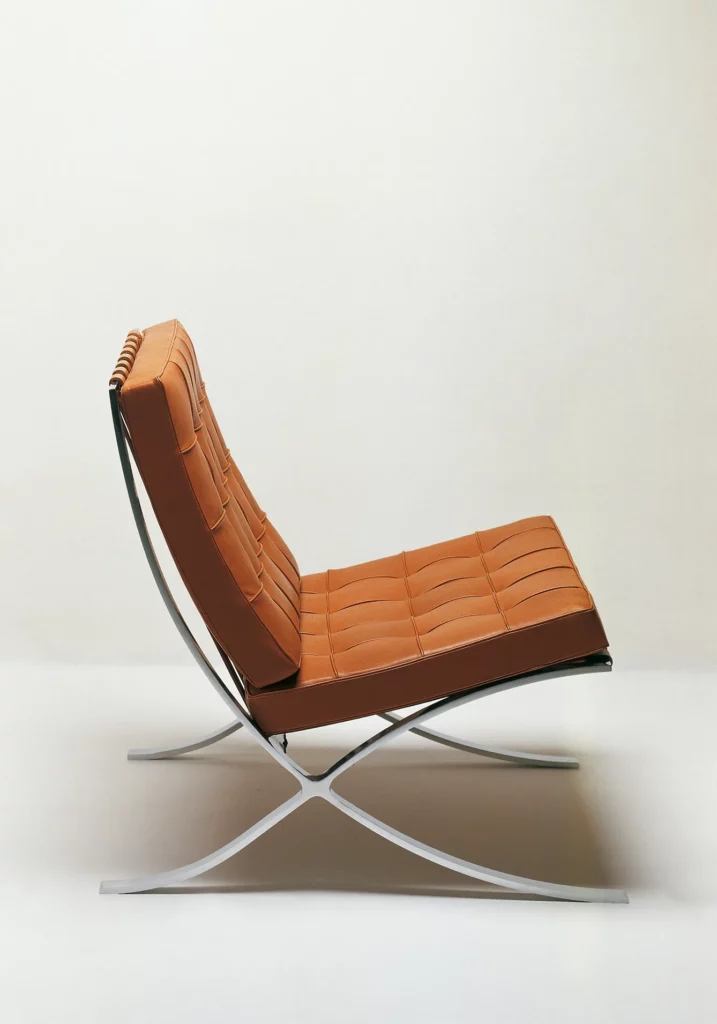
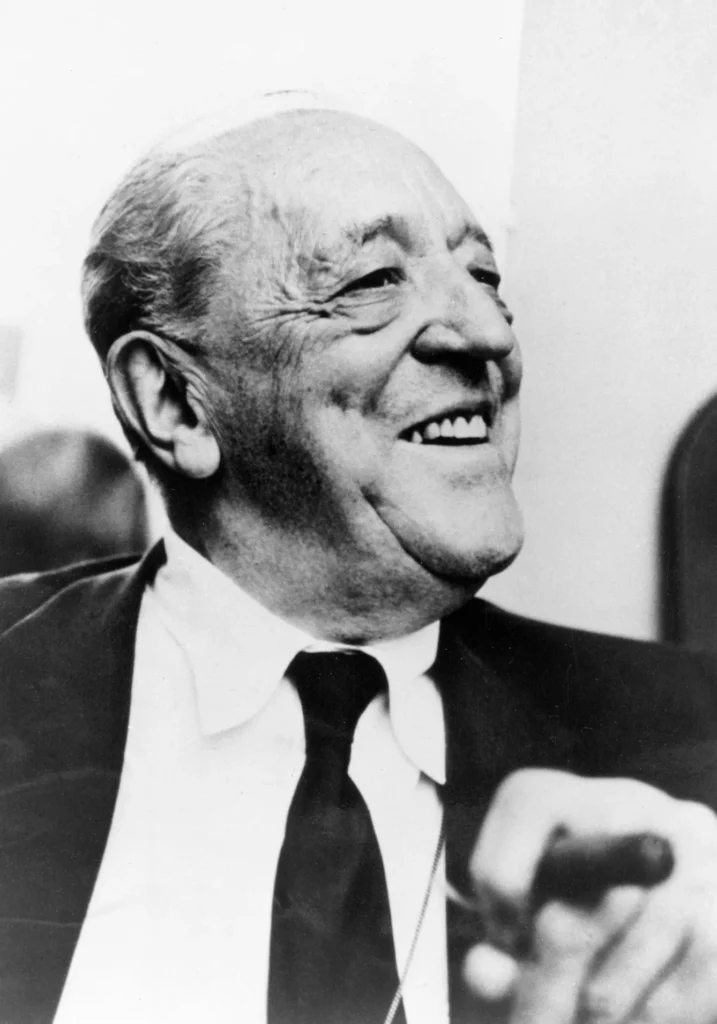
Mr. van der Rohe worked under conditions that every architect dreams of. The big piece of land on which the house was to stand was given to Mrs. Tugendhat as a dowry from her father, the wealthy textile merchant Alfred Löw-Beer. Her father also committed to paying for the entire building. And just as the land was not a problem, neither was the budget. When the architect van der Rohe asked what the budget for the building was, Alfred Löw-Beer dryly replied: “Unlimited.” The result was a breathtaking house named after its owners: the Villa Tugendhat.
And the unlimited budget had a significant impact on the face of the Villa. All the furniture was specially designed for Villa Tugendhat and was created using only the most luxurious materials—Italian white travertine for the stairs and terrace, rosewood, and Makassar ebony for the furniture. But the highlight was the wall of Moroccan onyx that turns golden light during sunset.
The Spanish footprint of Villa Tugendhat is also significant. The house was equipped with the now-famous Barcelona chair, which van der Rohe originally designed for the German pavilion at the 1928 World Expo in Barcelona. Members of the Spanish royal family used these simple yet elegant armchairs made of bent steel and natural leather to oversee the opening ceremonies. The second building to be equipped with these chairs was van der Rohe’s architectural masterpiece, Villa Tugendhat.
The technological luxury of the future
Villa Tugendhat had an unlimited supply of fresh, clean air that even some of today’s houses lack. Whatever room you are in will always get a refreshing breeze at the right temperature. How so, you ask? Thanks to a purpose-built heating and air conditioning system.
In winter, the system heats the air circulating through the house and cools it down during summer. Thanks to that, Vila Tugendhat, with mostly glass walls facing South, feels pleasant even in summer. At the time, the design and use of a system like this in a European family house were unheard of.
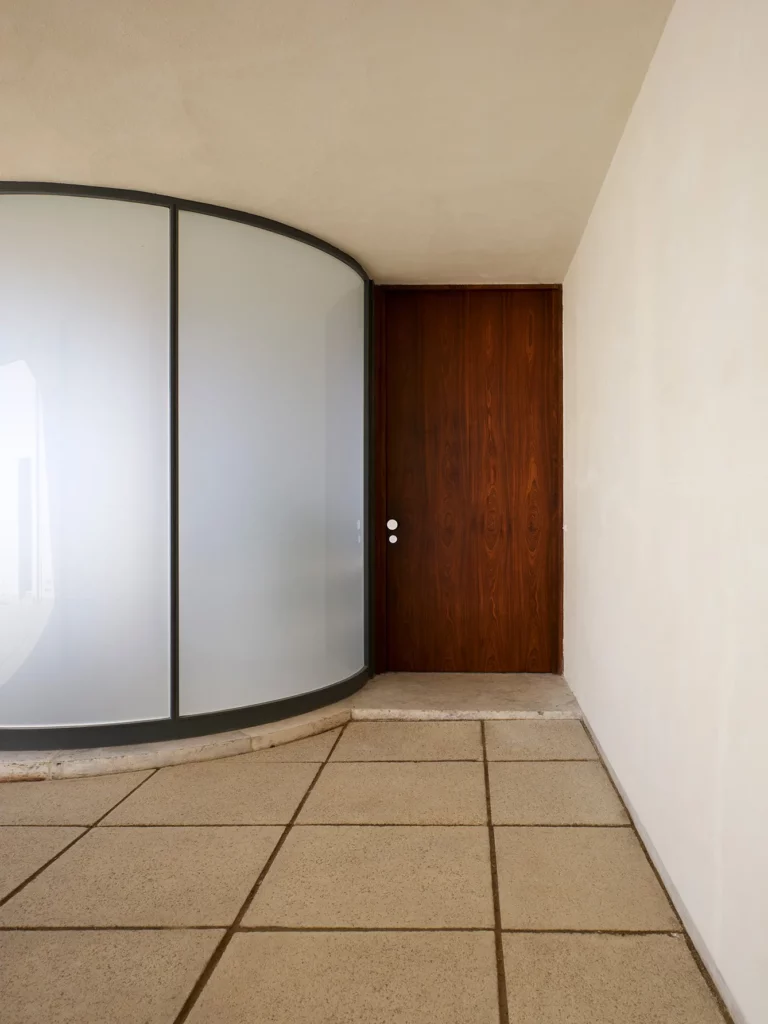
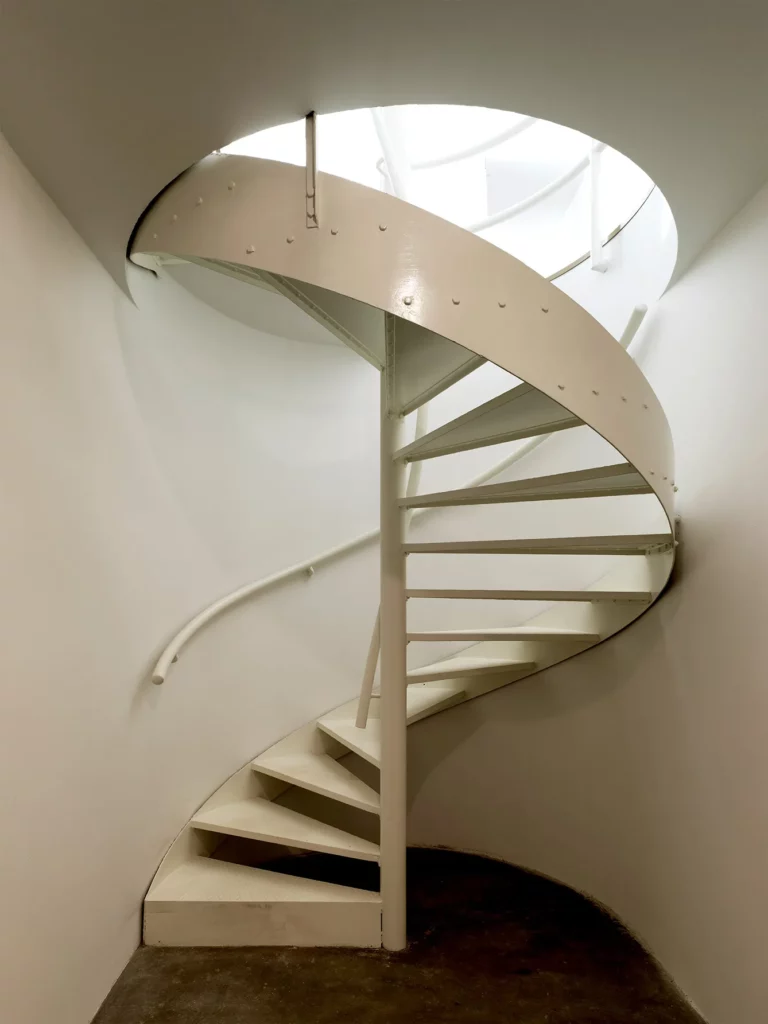
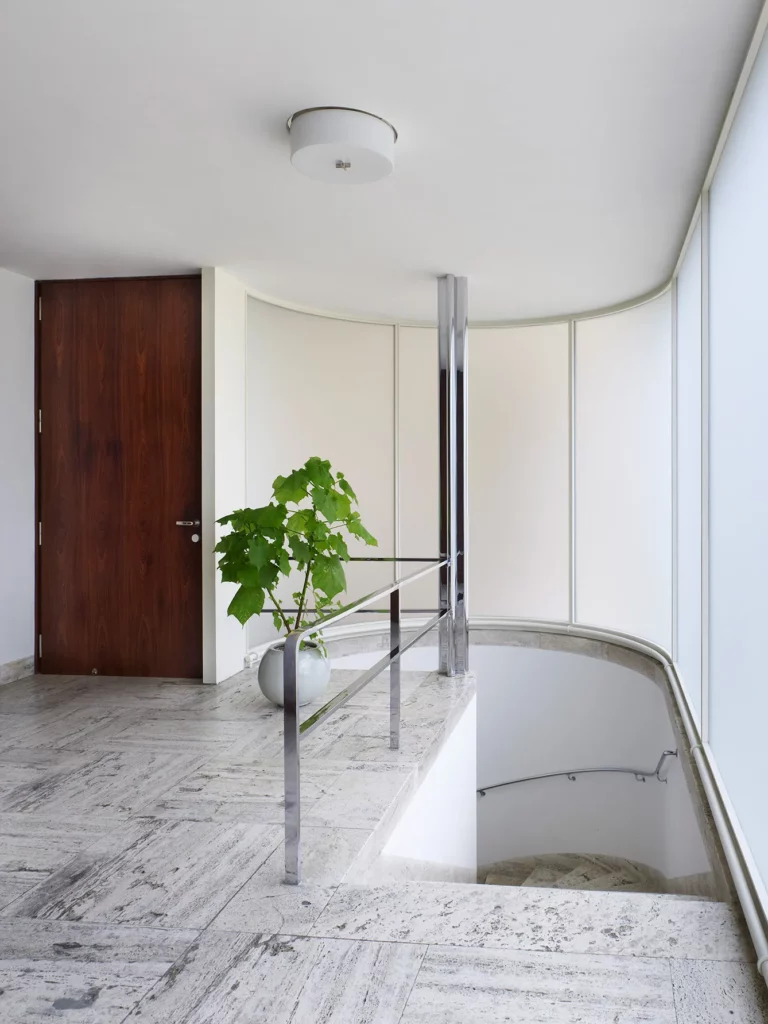
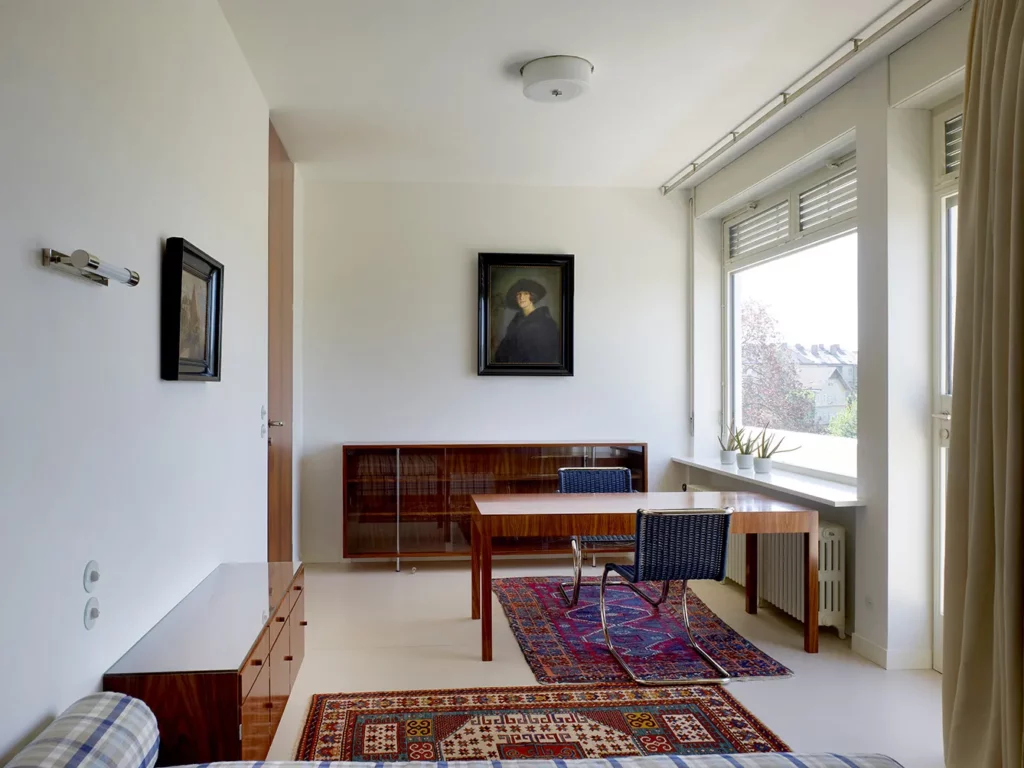
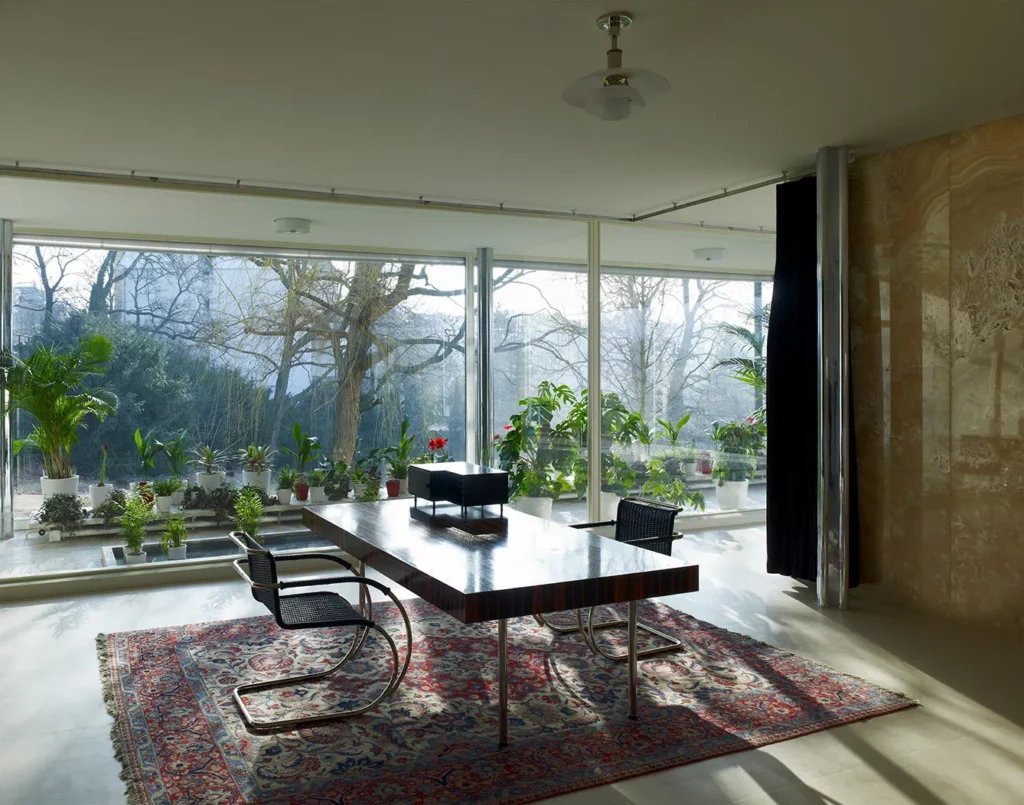
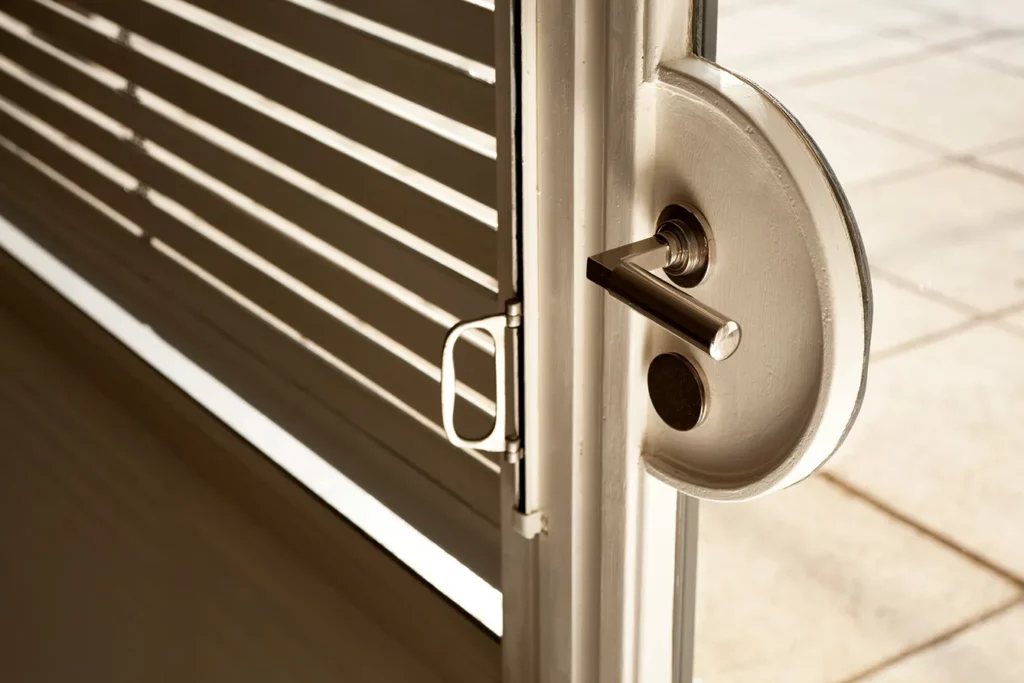
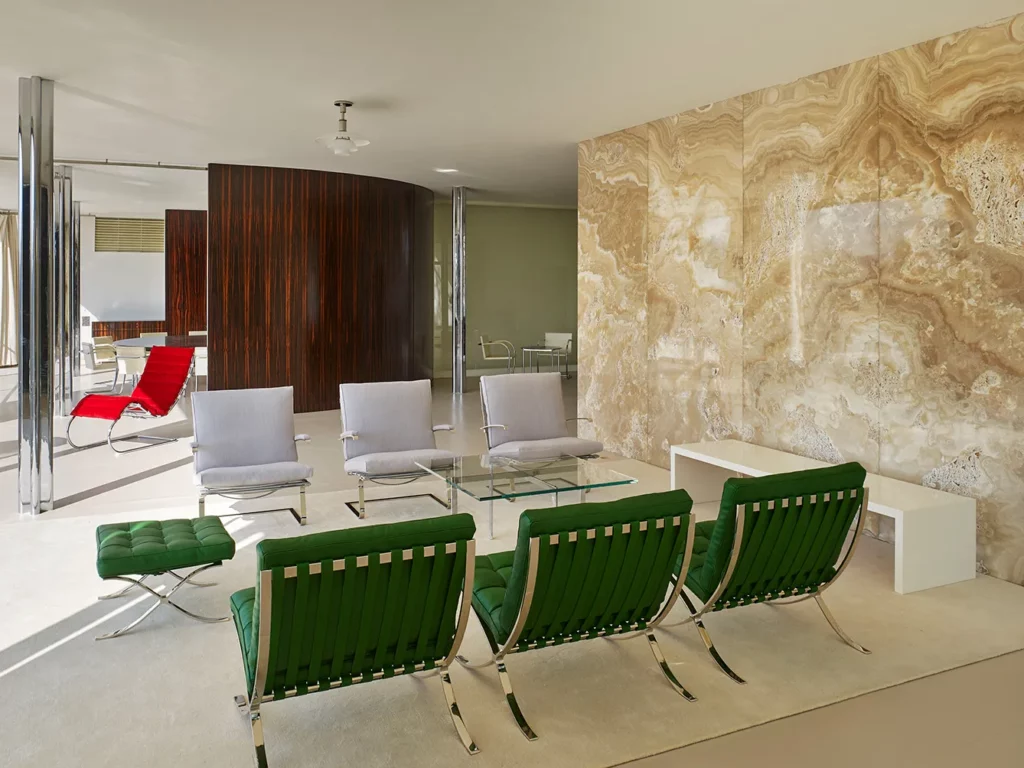
Fritz’s room; Main living area; Details; (Bottom) Main living area. Photos: David Židlický
This complex system was operated in an engine room. Mr. and Mrs. Tugendhat, or rather their maids, could open or close the fresh air inlet to the house, reduce or increase the air circulation rate and change the temperature inside the house at any time during the day. The air fed into the house was automatically filtered through three filters. The air that had already circulated inside the house was constantly refreshed with a cocktail of scents, seawater, and aromatic wood chips.
The house was, of course, fully electrified. Each room was equipped with several sockets hidden in the floor to maintain the design of the rooms. Thanks to the silent electric motors, it was possible to lower most of the walls in the house into the floor. The Villa then became an open space connected to the large garden. Similarly, the same electric motors could then be used to lower the curtains over the glass walls so that one would not be disturbed by the setting sun. All these gadgets made Villa Tugendhat a technological marvel of the time when there was no electricity in most European villages.
The Tugendhat Villa today
It is no surprise that Villa Tugendhat has been a UNESCO World Heritage Site since December 2001. But it had to go through difficult times. Its owners, Mr. and Mrs. Tugendhat, had to leave their house before the Second World War because of their Jewish background. During the war, the Villa was the headquarters of the Gestapo. After the liberation, the Red Army used it for a long time as a horse stable. The communists then nationalized it. First, it was used as a warehouse, then as an asylum for disabled children. For a brief moment, in 1972, the Villa was again converted into a luxury residence for Fidel Castro, Cuba’s communist dictator, to stay in.
After the fall of communism, the Villa was closed and gradually reconstructed. This continuous reconstruction effort took the last 20 years and cost a breathtaking 8 million euros. But the reconstruction was worth every penny! So if you ever find yourself in Brno, don’t hesitate to visit Villa Tugendhat!


